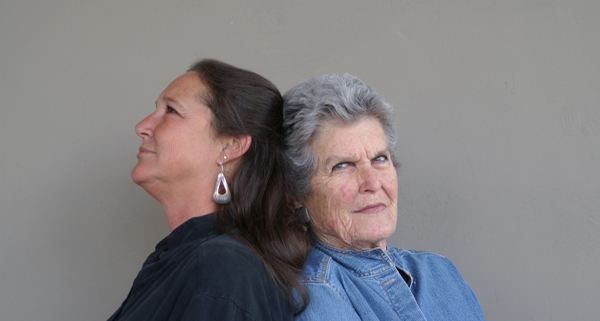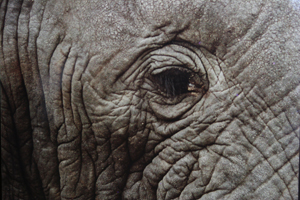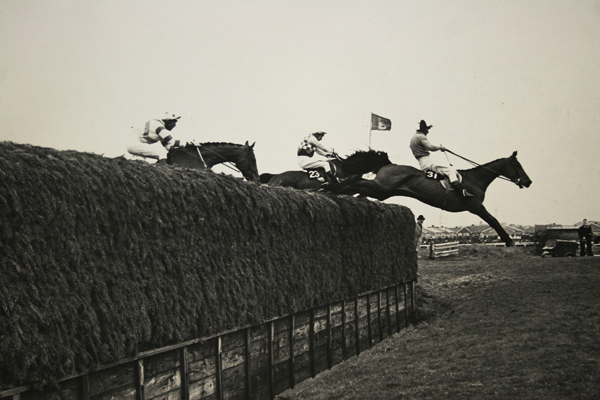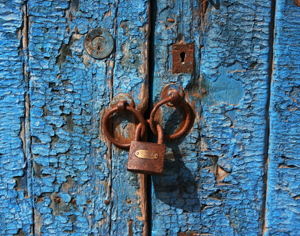Poignant Vision

Louise Serpa, right, with daughter Mia Larocque. Photo by Jamie Manser
Louise Serpa has intense eyes.
There’s a fire that burns behind them, conveying the wisdom of a fully lived life that she has also beautifully captured on film. In her home, the main hallway showcases striking, energetic black and white rodeo photos she is known by and has won awards for; there’s a reason she is dubbed the sport’s Ansel Adams.
Serpa’s shots place you right in the mix of bucking broncos and flying horses, images that channel Robert Capa’s philosophy; “If your pictures aren’t good enough, you’re not close enough.” She captures the action adeptly, with impeccable timing garnered from loving, and then living the rodeo since her introduction to it in 1943 at the age of 17.
But Serpa’s rodeo shots are not the theme of an upcoming exhibit she is sharing with her daughter, Mia Larocque, at Tucson Botanical Garden’s Porter Gallery. Serpa’s African wildlife pictures will be her focus with personal favorites set to hang. This show is exceptional because it’s the first time in over 25 years that a gallery is featuring her non-rodeo work – most of the images haven’t been exhibited anywhere – and it will only be the second time Mia has publicly shown her photography.

Photo by Louise Serpa
In Serpa’s living room, a collection of images shot in an African savanna stand on a sideboard. In one, an elephant’s face is so up-close and personal that the eyelashes are discernible and the texture of its skin is fantastically detailed.
“That elephant had its trunk on the car,” she explains. “The driver whispered, ‘Don’t move, don’t talk.’ It’s an elephant, it could easily throw us! And as many times as I have faced bulls, my heart was going boom boom boom.”
Across Louise’s office desk lays a large format print of a British steeplechase with horses in mid-air, clearing a fence.
“That was taken at the Grand Nationals in 1970,” she says. Shot from the race’s notoriously difficult Becher’s Brook jump, the image itself is historic – marking the first time a woman was permitted on the Grand National’s course. It wasn’t until 1977 that a woman rider was even allowed to compete.
“It was cold as hell that day, and I had to wear a dress because the Queen was there.”

Steeplechase, England’s Grand National, 1970. Photo by Louise Serpa
Serpa recalls the other photographers passing around a bottle of Scotch to keep warm. “I was the only woman, and I guess the men didn’t think I should drink straight from the bottle, so they poured my scotch into a film canister,” she laughs, producing the 40-year-old metal canister.
A pioneer in her field, Louise was also the first woman granted a photo pass by the Rodeo Cowboy Association in the 1960s, giving her access inside the arena.
Because Serpa knew most of the cowboys working the rodeo circuit, she didn’t generally experience gender discrimination. Being tough as nails, talented, smart and absolutely stunning probably didn’t hurt.
Mia Larocque is definitely her mother’s daughter. A vivacious woman and a talented photographer, she also intimately knows her way around a rodeo from both shooting it and competing in horse shows. She is warm and laughs easily; and it is also clear that she is someone to be reckoned with and an artist to keep an eye on.

“Locked,” by Mia Larocque
Mia browses through a thick stack of her photos. There are numerous, fascinating rust studies with gorgeous color saturation and textures so rich, the images seem three dimensional. Her vision, combined with the lighting and composition, produces endlessly interesting photographs. The subjects vary from portrait shots of Moroccans to landscapes, from detail studies to the rodeo.
Shooting a dangerous sport, Mia has witnessed tragedies. “I’ve seen them die before,” she says solemnly. “We feel the same way when something happens to the animals.”
Of rodeo critics, Larocque says they don’t understand that the horses and bulls are well taken care of. “They work for eight seconds. They buck because they love it, even without the flank strap,” adding that the animals can be worth anywhere from $100,000 to $200,000.
This February, Mia will again serve as La Fiesta de los Vaqueros’ official rodeo committee photographer – a position her mother held for many decades. “It is a great honor and privilege for me to continue the work and pictures she has provided for nearly 45 years,” she says on her artist’s statement.
Opening Feb. 2, the exhibit shows through March 1 with a public reception Feb. 12, 5 p.m.-7:30 p.m., 2150 N. Alvernon Way. The gallery is open daily from 8:30 a.m.-4:30 p.m. Visit TucsonBotanical.org, LouiseSerpa.com. Call 326-9686 with questions.
Category: Arts




